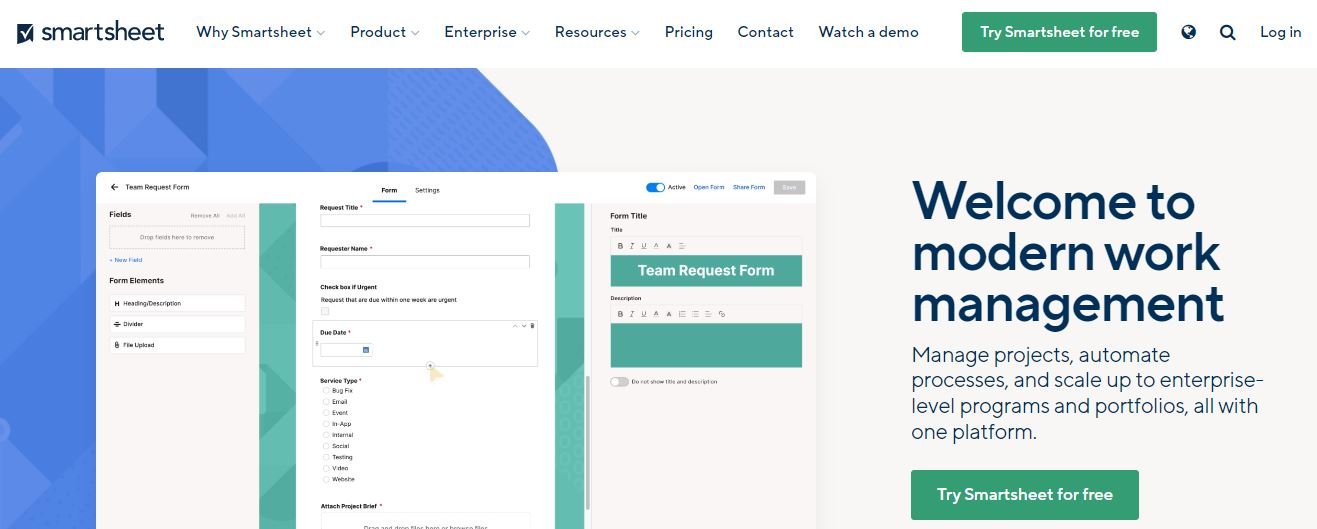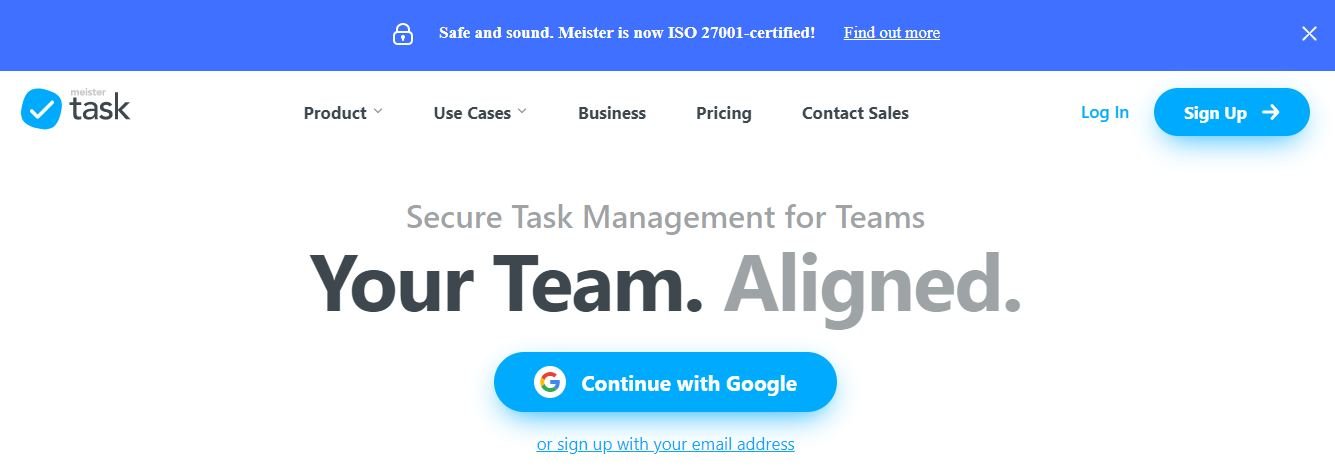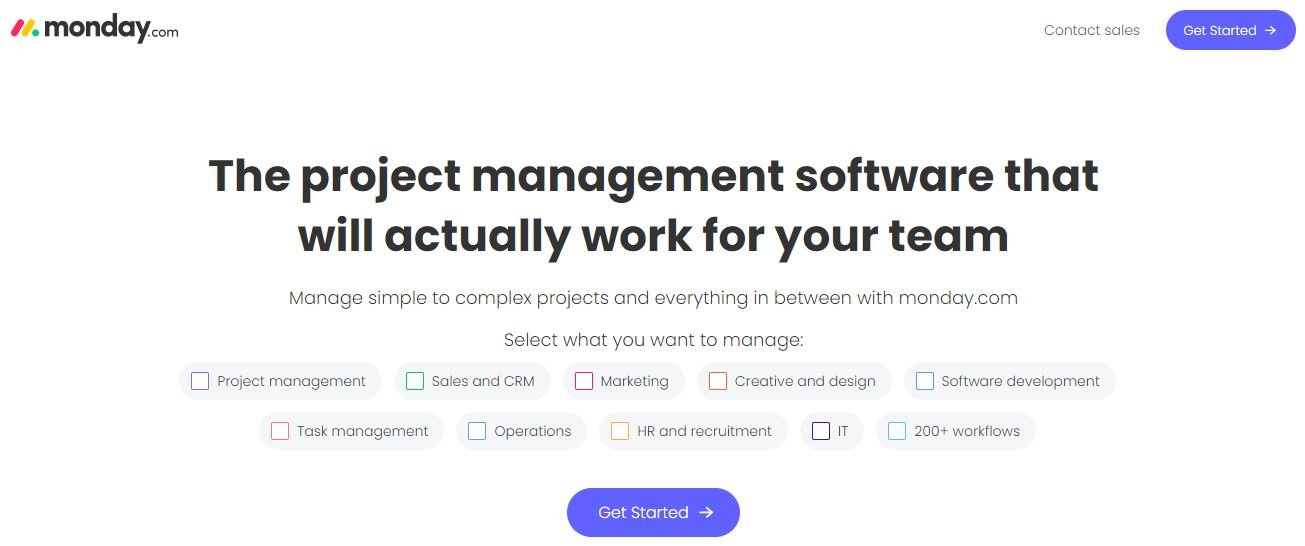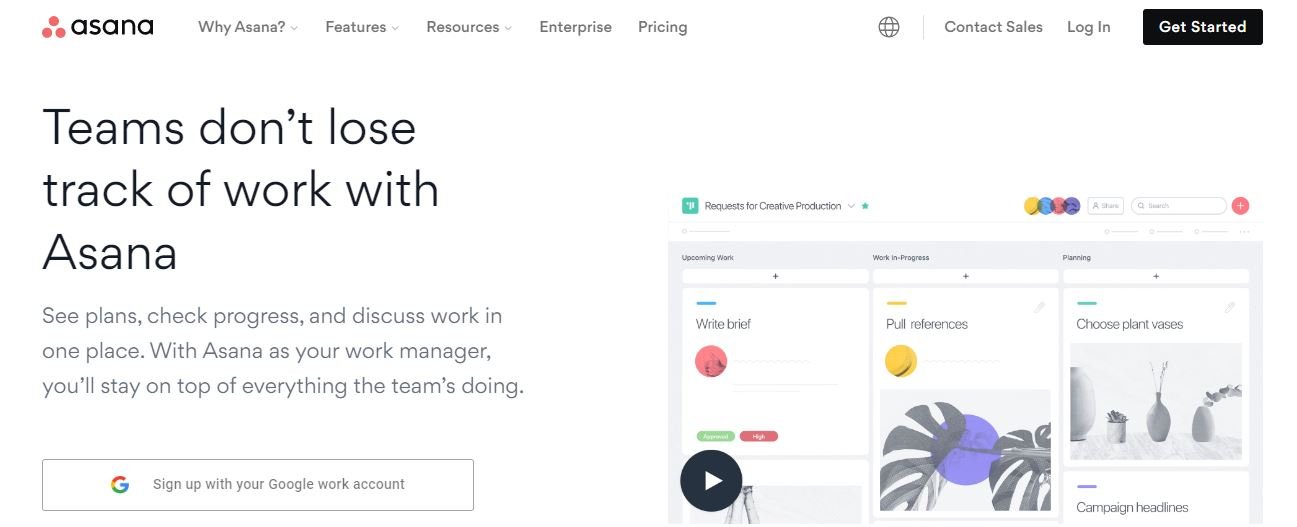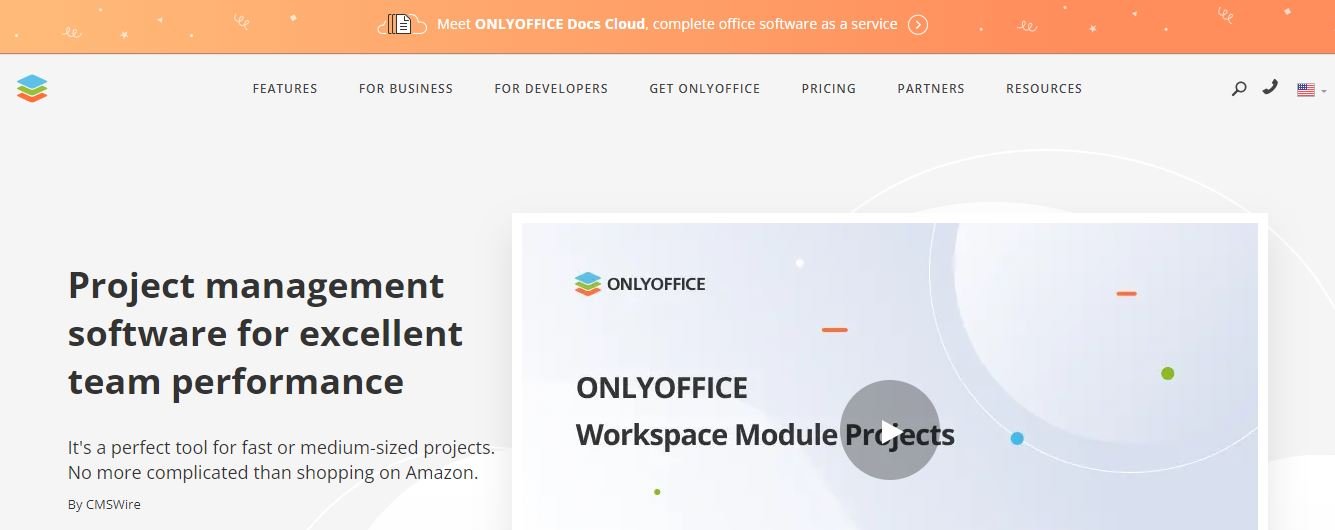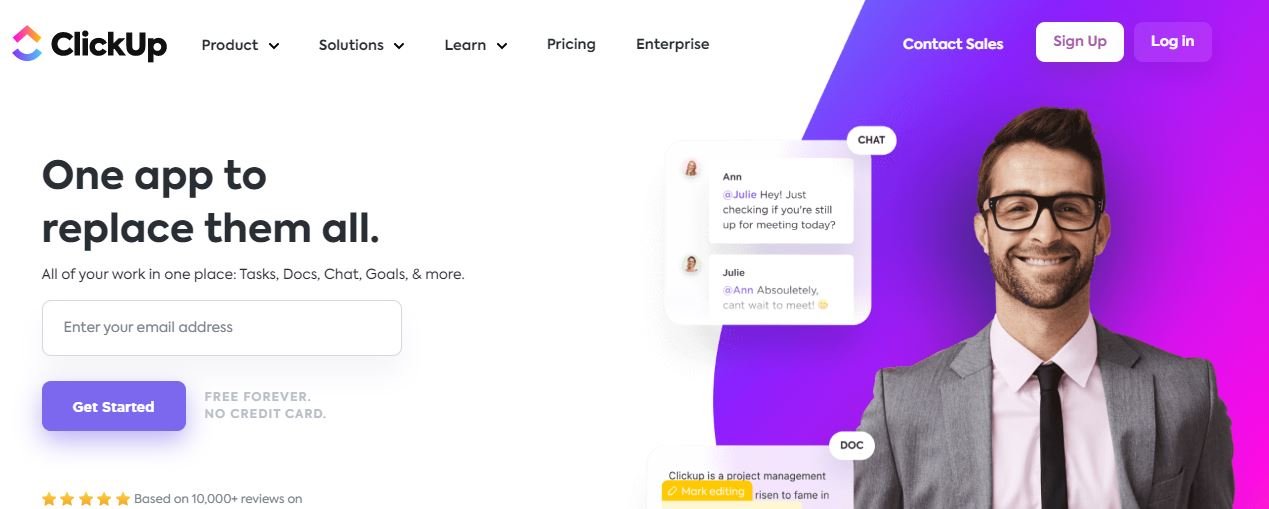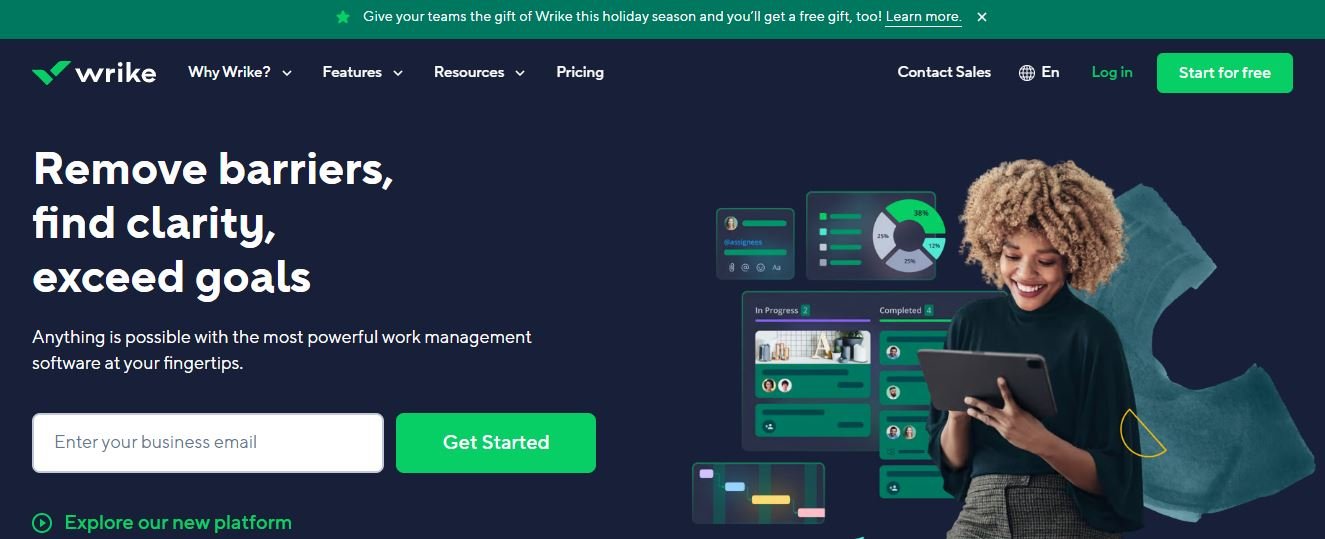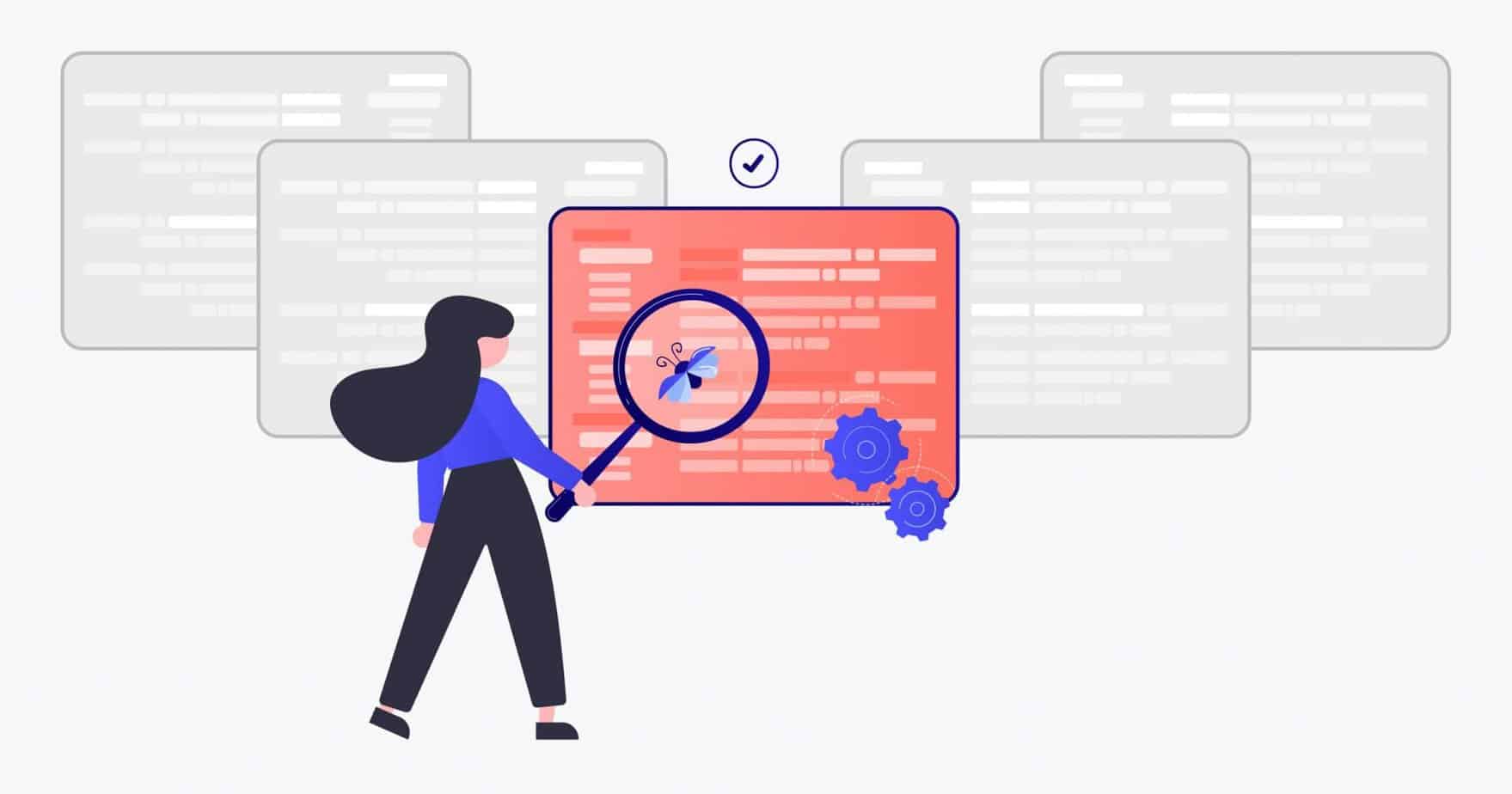
With geographically distant team members, it is much more challenging to maintain efficient team management and collaboration. Project management software is required to facilitate team cooperation and task management amongst members. Not aware of what that is? This article will explain everything you need to know about project management software and why you need it!
Software for project management facilitates the planning and distribution of responsibilities among team members. It is an all-inclusive workspace for numerous projects. You can assign duties to each team member and monitor their performance. This program increases team productivity by allocating assignments and maintaining team organization so that deadlines and objectives are accomplished.
There is an abundance of project management software on the market, each with its own pricing structure and set of capabilities. Finding a project management solution that meets your organization’s project management functions might be difficult. We’ve done all the research for you and compiled a list of the finest project management software, along with its pricing plans, essential features, and pros and disadvantages.
What Are Software for Project Management?
Using project management software for project planning, scheduling, and task execution. It is mostly used as a project administration system. It enables project managers to manage the project’s budgeting, quality management, job execution, and documentation. This software can also be used to improve team members’ communication and collaboration while working on a project.
These programs serve as a project manager’s right hand for project planning, task management, and distribution, document sharing and collaboration, bug and error management for tasks and their completion, tracking project progress via Gantt charts and reports, time tracking for completing projects on schedule, and content sharing with deadlines among team members. With proper project management, you may allocate resources more strategically.
How to Select the Most Effective Project Management Software?
Identifying your needs for a certain tool is the first step in determining which option is the best. A project management application is difficult to install, but it provides managers with both efficient and effective task management. We have you covered on the necessary measures to make the best decision.
Here are the six actions you may need to take before to beginning your search for a project management tool.
- Specify your needs; you must identify current workflow problems. It is also crucial to choose a multifunctional tool that can accommodate the workflow of a business. Additionally consider the culture and project management methodology of your firm.
- Establish an evaluation team – you must assemble a group of individuals whose roles correspond to those of your organization. A superior management tool will be adaptable to numerous sorts of workflows. In this step, you should also compile evaluation guidelines for a tool and create a shortlist of products for your company.
- After selecting which tool would be suitable for you, you must put the tool to the test. Choose a time period during which you will test a particular to its maximum capacity. You must determine whether a certain project management solution meets the needs you identified in step 1.
- After a successful trial of a tool, you must convince higher management to install project management software in your organization’s workflow. You can do so by highlighting the potential objections the tool will answer.
- After receiving clearance for a project management tool, the next step is to purchase and install it. Buy a tool that meets your specifications. To improve the efficiency with which your staff utilize this technology, you can plan a training session.
- After installation, you must assess the tool’s influence on your organization’s ability to manage workflow and tasks across multiple functions.
Top Project Management Software in 2023
Here is a list of the Top Project Management Software & Tools for your business in 2023:
1. SMARTSHEET
Smartsheet is a project management application that resembles a spreadsheet and contains numerous task insight capabilities, such as time reports and Gantt charts. This tool will provide an alternative to Excel’s complex formulas. The platform delivers shared views, detail history, activity logs, automated notifications, reminders, and status reports to keep everyone aligned and informed. It offers three payment plans, beginning at $9 per user per member with a minimum of 3 members per team and a maximum of 25 people per team, and a 30-day free trial.
Features
- Visualization of task progress with Gantt charts and calendar views.
- Customization – If you’re the kind to customize everything, including your tools, you may also add brand logos and create color schemes for certain projects.
- Asset management- Smart sheets allow digital asset management using Brandfolder.
- Several sheets are consolidated to generate reports.
- Smartsheets is linked with Microsoft, Google, and developer essentials such as Jira, as well as helpful business applications like as Salesforce, ServiceNow, Slack, Box, and Tableau.
Pros
- Sheet-to-sheet connection.
- Many templates and resources for projects.
- Facilitated sharing.
- Customization of dashboards and processes is simple.
Cons
- Not possible to modify chart colors
- Modifications are not reflected in real-time.
- Jira, Salesforce, and Dynamics connectors are exclusive to the Premier package.
2. PROOFHUB
ProofHub offers a central location for team collaboration and project administration. It offers a workspace for task lists, workflows, Gantt charts, discussions, calendars, and files. Task insights help you manage and keep track of the duties of your team members. The reports created by proofHub provide a comprehensive picture of the task’s development. It is capable of generating workload and resource reports. It is beneficial for freelancers and organizations of all sizes. ProofHub has no user limit and charges a flat rate, regardless of the amount of users. There are two plans available: the $50 per month Basic plan and the $99 per month Ultimate Control plan.
Features
- ProofHub’s user interface is straightforward and beginner-friendly.
- ProofHub offers an abundance of customization choices to meet your needs. You have complete control over the color palette and layout of your tool.
- It also supports other languages, including French, German, and Spanish.
- ProofHub allows project managers to provide specific roles to staff for access permissions. These custom jobs grant employees varied levels of access to your application.
Pros
- Offers many customization options.
- Able to manage difficult tasks.
- Simple and intuitive UI.
- Customizable access controls are among the security measures available.
Cons
- Lacks extra features such as budgeting capabilities.
- Reputation for having bugs.
- Little integration possibilities available.
3. MEISTERTASK
Meister Task is a web-based project management application that facilitates team collaboration and task-related communication. It provides a dashboard for monitoring current projects and active tasks, along with their completion rates. In addition, it contains features such as backlog management, customisable fields, and file-sharing capabilities. It offers a very configurable, aesthetically pleasing interface. MeisterTask’s pricing structure consists of four tiers: Basic, Pro, Business, and Enterprise. The free Basic plan covers a maximum of three projects. The Pro plan costs $4.19 per month per user, but the Business plan costs $10.39 per month per user. The Enterprise package offers flexible price options.
Features
-
- User-friendly interface – MeisterTask’s user-friendly interface is straightforward and visually appealing.
- Each user has a central location for sharing files and ideas with the rest of the team. In addition, there is an activity stream for communicating due dates, modifications, and tasks.
- Customization – MeisterTask allows you to tailor dashboards to your specific requirements. You can choose which features to present in front of your project timeline board.
Pros
- Many choices for integration.
- Modifications are easily made.
- On a plan, team members can readily collaborate.
Cons
- Not able to manage difficult projects.
- Mobile application tools are insufficiently functional.
4. MONDAY.COM
Monday.com is an award-winning program for project management that is utilized by numerous well-known organizations like as Coca-Cola, BBC studios, Adobe Hulu, etc. It is a web-based tool for project management with features such as resource and project management, time tracking, collaboration, and reporting. Users are able to upload and attach files to cards, as well as make comments and name teammates. Monday.com can be used to track hours, deadlines, and bills. It includes workflow automation tools so you may automate various process steps. Starting at $10 per user per month, this service also offers a 14-day free trial and a free plan for two users.
Features
- You may personalize the access of freelancers and third-party agents to your team members for collaboration on projects.
- Native integration.com is compatible with Microsoft, Google, Dropbox, and Zapier, among others. It is an open-source application that allows programmers to build their own integrations.
- The Monday.com comment section is connected with Twitter and LinkedIn so that team members may remain informed.
Pros
- Comprehensive reporting capabilities
- Capability to add independent contractors and outside agents
- Simple to personalize a workflow or board
- A significant number of supported integrations
- Massive emphasis on teamwork
Cons
- Maybe overly robust for smaller groups
- Locking Gantt charts to a mid-level plan
- Not able to manage difficult projects
5. ZOHO
It is an application for project management that can handle projects of any grade or complexity. It has collaborative elements that mimic social networking sites, such as feeds, forums, and conversations. Zoho’s mobile application is available for iOS, Android, and additional platforms. The resource utilization table indicates who is available, who is occupied, and who is overburdened. Projects on Zoho cost $5 per user per month and include a 10-day free trial. There is also a freemium version that supports up to three users and two projects.
Features
- Automate repetitive tasks at regular intervals by creating a recurring task and setting email reminders for tasks.
- Team collaboration – For team collaboration, you can also create or download project documents, presentations, and spreadsheets, as well as upload and share files.
- Time monitoring entails keeping track of the hours spent on tasks and comparing them to what was initially anticipated.
- You may define relationships between tasks and assign them to the appropriate individuals, plan events in your calendar, and track the percentage of work completed after it has begun.
- You can integrate with Zoho’s other services as well as third-party applications such as Microsoft, Google, Dropbox, Zapier, Zendesk, etc.
Pros
- Workflow automation made easy.
- An infinite amount of projects.
- Strong communication capabilities.
Cons
- Not compatible with QuickBooks.
- Several reporting features are missing.
6. ASANA Project Management Software
Asana is a cloud-based project management application that emphasizes collaboration. It features a great workflow customization option for automating repetitive processes. You can invite an unlimited number of participants to numerous projects. You can also implement project-specific rules and approval protocols. It is suitable for enterprises of all sizes, but not freelancers. Different integrations handle the basic project management capabilities, which may not be optimal for particular users. The premium price plan begins at $10.55 per user per month with a free trial period of 15 days. The monthly cost per user for the business plan is $24.99 when paid annually.
Features
- Asana’s user interface is incredibly straightforward and offers a multitude of flexible options for views.
- Visual Project Timeline – Asana’s visual project timeline functionality is similar to a Gantt chart. It illustrates the due dates, assignees, and progression of your tasks over time.
- Asana can interface with numerous applications to serve as a central center for all your business activities.
- It’s compatible with Slack, Google Calendar, Dropbox, Outlander, and Unito, among others.
Pros
- Drag-and-drop feature for managing tasks and updating files.
- Many choices for integration.
- Workflow automation automation.
- Simple and intuitive UI.
Cons
- Not appropriate for complex projects.
- Very few functions are available on the free plan.
- Difficult to collaborate on the acquisition of a plan.
7. ONLYOFFICE PROJECTS
Only Office, sometimes known as ONLYOFFICE, is an identical online documentation suite to Microsoft. It is developed by Ascencio system SIA, which is reported to be a Russian company’s subsidiary. ONLYOFFICE’s software tools include the same important documentation capabilities as Microsoft, including documentation, presentations, and spreadsheets. This organization also offers online document editing tools, a platform for document management, corporate communication, email, and management tools. ONLYOFFICE Projects is a project management program designed to assist users in effectively carrying out project handling activities by dividing the tasks into the following main stages: management of your project team, workflow scheduling, task distribution among members, and tracking and reporting project progress to achieve the desired end results on time.
The project’s application for Android and iOS allows you to manage your ONLYOFFICE account’s stored projects straight from your mobile device. This program allows you to view, edit, and create projects, milestones, tasks, and subtasks, manage your project team, assign responsible parties for each task, access project documents in one safe location, and even build a conversation and commenting area for team members. This software manages multiple tasks by using the module structure for project management. The following is the module structure for ONLYOFFICE Projects:
- This module is for creating a project, including its title and description, assigning a project manager, and forming a team.
- This pertains to the inclusion of new team members, the restriction of actions for specific team members, and the removal of team members.
- Workflow scheduling – this pertains to the creation of milestones and the achievement timetable.
Assigning assignments – this is for creating tasks. This module allows you to specify the task’s title, add a description, and assign it to a milestone, accountable team members, and a due date. You can also assign a priority to a certain task. - Creating subtasks – This module is used to create subtasks under the main task’s heading. The “ADD FILTER” button can be used to filter tasks by status, responsibility, milestone, project, and due date.
- Using a Gantt chart – This module is used to display bar charts that demonstrate a project’s schedule and task dependencies. After selecting a project from the projects page, clicking the project title, and switching to Gantt chart mode, the chart will be displayed.
- This module is utilized to generate a discussion bar for members. You can invite or delete users from this discussion bar, as well as upload project-related materials.
- Progress reporting – This module is utilized to generate progress reports for ongoing projects. You can choose the appropriate report type and adjust its parameters.
- Suspending/closing/deleting projects – This module facilitates the removal of inactive or abandoned projects owned by management.
- Updating Projects module settings – This module relates to the project module’s level of access. This access has five levels with related operations: visitor, user, project team member, project manager, and project administrator.
Your Projects application includes the sections listed below:
- Dashboard is the part that provides an overview of your projects and tasks. You can examine your future and active tasks, your projects, including those you follow, or a drop-down list of all active projects.
- This section offers a list of all your responsibilities. The overview of tasks can be seen and edited. Examine the subtasks and pertinent documents. You can also leave or view comments for a particular task.
- Projects – Here, you may access detailed information about tasks as well as a summary of the project’s status, team members, and creation date. Also, you may view project milestones with their due dates and assigned users. Moreover, you may view the project discussion and associated materials. Also, this part provides debate and documentation. In this section, all discussions and materials pertinent to your projects will be archived.
- This section allows you to enable passcode or fingerprint protection for your program, as well as many other settings, such as color scheme, clean cache, open help, app usage analytics, etc.
Pros
- Using a Gantt chart to track project progress.
- Report production.
- Separate discussion and documentation sections.
- Restriction on member actions.
- Integrated password security for the application.
Cons
- Extremely taxing on system resources.
- Many application bugs.
8. ClickUP
ClickUp is a project management solution with features that enable managers to properly manage tasks for ongoing projects in order to provide clients with excellent work. This application’s aim and vision is to save you time. It is an all-in-one, free project management software that provides all the tools you need to plan, organize, and collaborate on projects, with an intuitive interface and more than 15 different view types.
It also has different pricing plans for different levels of teams; it is free for personal use, $5 per member per month for small teams, $12 per member per month for medium-sized teams, $19 per member per month for large teams, and for enterprise-scale teams, you must contact ClickUp’s sales department, which is available 24/7.
Features
Some daring aspects of this PM application include:
- Bespoke views – ClickUp offers more than ten distinct views for projects, ensuring that all of your teams are on the same page (quite literally)!
- Custom statuses – ClickUp allows you to add custom statuses to numerous projects, allowing you to view the status of a project at any moment.
- When you wish to address a comment to a certain team member, you can assign it to them and ClickUp will notify them so that it isn’t missed. After addressing a comment, a team member can label it as “resolved.”
- ClickUp delivers Gantt charts for project tracking and management. You can examine your ongoing progress on a timeline.
- Bespoke Dashboards – ClickUp’s robust dashboard allows you to automatically visualize and organize project data in a centralized location.
- To keep track of project activity, it is possible to set up reminders for pending and overdue tasks.
Time Tracker – With a single click, you can set up time tracking for each project job to determine how long it takes to finish them.
Pros
- Extremely adaptable task administration.
- Outstanding collaborative tools.
- Various project views can be visualized in various ways.
- Strong hierarchy.
- Bespoke Access Permissions allow you to invite contractors to your team’s workplace.
Cons
- Due to the number of accessible features and degree of customization, there is a steep learning curve.
- There is no Table view on the mobile app.
9. WRIKE Project Management Software
Wrike is a web-based project management program that is designed for teams with at least five members. This software permits an infinite amount of users. The tools and interface are highly flexible; workflows, dashboards, and request forms can be modified. It is simple to navigate between the main screen and the timesheets, dashboards, calendars, reports, and streams. In addition, it features an easy help center with interactive training videos, an onboarding guide, and a collaborative community. Using tools for performance reporting, resource management, and allocation, among others, users can gain sophisticated project insights. This application’s pricing begins at $9.80 per user per month, with the option to add external collaborators for free to a paid account.
Features
- Three-paned view Is an intuitive interface designed for usability and efficiency. This UI makes managing everything from a single workspace simple. You can easily track every task dependency, team communication, and progress report for the project.
- Analytics- robust analytics and report generating to provide an overview of project and team progress.
With Wrike’s simple communication and collaboration tool, you can assign tasks and communicate information swiftly and effectively. - Wrike has over 400 pre-built interfaces with software such as Microsoft, Google Drive, and Dropbox, as well as marketing applications such as Salesforce and market.
Pros
- Offers alternative ways to see the same facts.
- Several integrated features.
- Comprehensive information and insights to determine the project’s progress.
Cons
- Not user-friendly for beginners.
- No offline capability.
- There are no subtask divisions in the free plan.
10. TEAMWORK Project Management Software
Teamwork is a Kanban-based online project management application with extensive personalization capabilities. It has advanced reporting capabilities, including Gantt charts, time tracking, and workload reports, allowing you to visualize the progress of your projects. It allows functionality to be disabled for specific team members. It permits accounts to be branded with unique company identities. Teamwork is characterized by teamwork and task allocation. The free plan permits five users and provides 100 MB of storage space. Annually, the Pro plan costs $10 per user each month. Annually, the Premium plan costs $18 per user each month. Enterprise-specific pricing is also available.
Features
- Teamwork is equipped with an intuitive task board that displays only your current and recent tasks.
- Teamwork allows you to respond to members’ comments and notifications via email.
- Invoicing Capabilities – The invoicing tab on Teamwork’s time tracker is a valuable billing function. It can calculate billable hours for the purpose of generating invoices for clients.
Pros
- Modifications are easily made.
- Utilizable invoicing tool.
- Simple and intuitive UI.
- Powerful mobile application.
- Numerous reports for the visualization of project progress.
Cons
- The free plan only benefits small teams.
- Not able to manage difficult projects.
Conclusion
A project management tool enables productive and efficient management of project teams and day-to-day tasks. They facilitate the streamlining of all processes associated with delivering project deliverables. Whether it is managing workloads, scheduling your schedule, or monitoring your progress, time management is essential. There are so many actions covered by a PM tool that it is nearly difficult to manage a complicated project without one! In order to better your project management process, we have compiled the most effective project management tools. Scroll up to find the best option for you!
